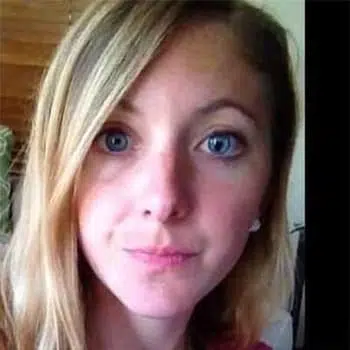*If you are in an immediate emergency, call 911. If you are looking for more information on substance abuse treatment and it is not a medical emergency, call our 24/7 Opioid Helpline at 888-526-1167.
In Ohio, including Columbus, Cleveland, and Cincinnati, there has been a significant increase in opioid use, as evidenced by a 6.7% uptick in opioid overdose deaths in the state from 2018 to 2019. According to more recent data from the Ohio Attorney General, there were 11.01 opioid overdose deaths per 100,000 Ohioans in the second quarter of 2020, which is the highest in 10 years.
Opioids are a problem in Ohio and across the United States as a whole, where they account for 70% of drug overdose deaths. To fully understand the severity of the opioid epidemic, it’s crucial to understand the drugs themselves.
Opioid Abuse in Ohio
Opioid abuse in Ohio may be driven by the large number of opioid prescriptions in the state. In 2018, Ohio providers wrote an average of 53.5 opioid prescriptions for every 100 people in the state, which is higher than the national average of 51.4 per 100 people.
This Season, Give Yourself the Gift of a Fresh Start.
Whether you are struggling with addiction, mental health or both, our expert team is here to guide you every step of the way. Don’t wait— reach out today to take the first step toward taking control of your life.
Consider these statistics as well:
- Ohio’s rate of babies born with neonatal abstinence syndrome/neonatal opioid withdrawal syndrome was 11.6 incidents per 1,000 hospital births, compared to seven per 1,000 births nationwide.
- Data from the Franklin County Coroner’s Office shows 855 overdose deaths in the county in 2020, representing an increase of 83.9% since 2017.
- Of the 855 overdose deaths in Franklin County in 2020, 87% involved the synthetic opioid, fentanyl. This rate represents an increase that has occurred over the last four years.
How Opioid Addiction Happens
Opiates and opioids are highly addictive drugs, and the risk of addiction increases when people misuse them. However, even prescription opioids can become problematic.
As the Centers for Disease Control and Prevention (CDC) explains, up to one-fourth of people with long-term opioid prescriptions from a primary care provider struggle with an opioid use disorder.
People who are addicted to opioids and opiates will continue to take the drugs despite understanding the negative consequences. In many cases, the drug stops providing pleasure. Someone with an opioid use disorder takes the drug because they have become physically dependent and want to avoid uncomfortable withdrawal symptoms.
People who are addicted to prescription opioids may engage in a practice called “doctor shopping,” in which they go to various doctors, seeking out more prescriptions. When prescriptions run out, people may turn to street-level drug dealers or begin using heroin, because it can be cheaper and easier to obtain on the street. In fact, about 80% of heroin users report that they began with prescription opioids before moving on to heroin.
Common Signs of Opioid Addiction
How can you tell if you or someone you love is addicted to opioids?
There are several common signs of opioid addiction:
- Changes in behavior or mood
- Changes in relationships
- Pill bottles in the trash frequently
- Doctor shopping or pharmacy shopping in an attempt to get more than one opioid prescription
- Lying about symptoms in an attempt to get prescriptions
- Isolation
- Financial problems
- Poor work or school performance
- Loss of interest in activities that the person used to enjoy
Continue reading at Signs, Symptoms and Side Effects of Opioid Abuse →
If you are struggling with opioid addiction, we are here for you.
Why Are Opiates Addictive?
When someone uses opioids, the drug binds to the brain’s opioid receptors, which then triggers the release of feel-good chemicals, eventually causing the brain to seek out these substances again. The reaction that opioids cause in the brain creates a reduction in pain and an overall feeling of relaxation. People with an opioid use disorder take drugs repeatedly to achieve these same effects, but the body becomes dependent over time.
What is considered an opioid?
Opioids and opiates are drugs that slow down the activity of the nervous system, which decreases pain and affects breathing. Common opioids include heroin, oxycodone (Percocet, Percodan, OxyContin), hydrocodone (Vicodin, Lortab, Norco), fentanyl, hydromorphone (Dilaudid), buprenorphine (Subutex, Suboxone), codeine, methadone, morphine, and tramadol (Ultram).
Read more: Is Ketamine an Opioid?
How bad is the opioid epidemic in Ohio?
Multiple sources show that Ohio’s opioid epidemic is worsening. For instance, data from Franklin County Coroner’s Office shows that overdose deaths are increasing, with most overdoses involving the synthetic opioid, fentanyl. Ohio’s rate of opioid prescriptions exceeds the national average, as does the rate of babies born addicted to opioids.
Are opioids legal in Ohio?
Opioid drugs like Vicodin and OxyContin are only legal with a prescription from a doctor, but some people may buy these drugs illegally from drug dealers, take prescriptions that belong to someone else, or misuse their own prescriptions. The opioid drug heroin is a Schedule 1 Controlled Substance, making it illegal in Ohio and across the nation, as the Federal government declares that it is highly addictive and has no medical use.
Are you at risk for opioid addiction?
Anyone can develop an opioid use disorder, especially if they misuse their prescription drugs, but certain risk factors can make addiction more likely. Research suggests that history of addiction, untreated mental health disorders and social or family environments that encourage drug use can also increase the risk of opioid addiction. For example, you may be at greater risk if your friends or family members misuse opioids.
Opioid Addiction Treatment in Columbus, Ohio
If you’re looking for opioid addiction treatment in Columbus or surrounding areas, you should seek out a center that offers medical detox, as opioid withdrawal symptoms can be extremely uncomfortable and potentially dangerous. It is also beneficial to seek an accredited treatment center that employs licensed addiction professionals.
At The Recovery Village Columbus, we offer comprehensive Ohio addiction treatment. We provide a full continuum of care, beginning with medical detox for opioid addiction. After completing detox, patients can transition to residential treatment, partial hospitalization services or intensive outpatient care. We employ licensed and certified addiction professionals, and we are accredited by the Joint Commission, so you can rely on us for quality opioid addiction treatment.
Expanding Access to Opioid Addiction Treatment in Ohio
In 2017, the Dayton Daily News reported that there were 17 counties in Ohio in which there is not a single provider to treat opioid addiction. As treatment is essential in fighting this battle, it is clear that the state needs providers and treatment centers in both rural and urban areas.
An article from Ohio State University shares the need to help those people in rural areas, noting:
One effective way to combat Ohio’s growing opioid crisis is to prioritize treatment in underserved areas across the state because those are among the areas struggling most with opioid abuse, says an analyst with the C. William Swank Program in Rural-Urban Policy at The Ohio State University.
The most effective method to reduce opioid addiction, abuse and overdose death is medication-assisted treatment. This involves working with doctors, hospitals and treatment centers across the state to offer the needed services.
Ohio Resources for Opiate Addiction
An opioid use disorder could develop even after taking the drug just a few times.
If you are struggling with an opiate or opioid addiction, there is hope. It’s never too late to begin recovery. Facilities like The Recovery Village Columbus can help you.
Other helpful resources include:
- Netcare Access Crisis Hotline: 614-276-CARE (2273)
- Opiate Crisis Line: 614-724-HOPE (4673)
- Harm Reduction Ohio: Fulfilling all online orders of Naloxone at no cost to Ohio residents
- Families of Addicts: A support system local to Ohio that provides education and empowerment for people struggling with substance use disorders and their loved ones









